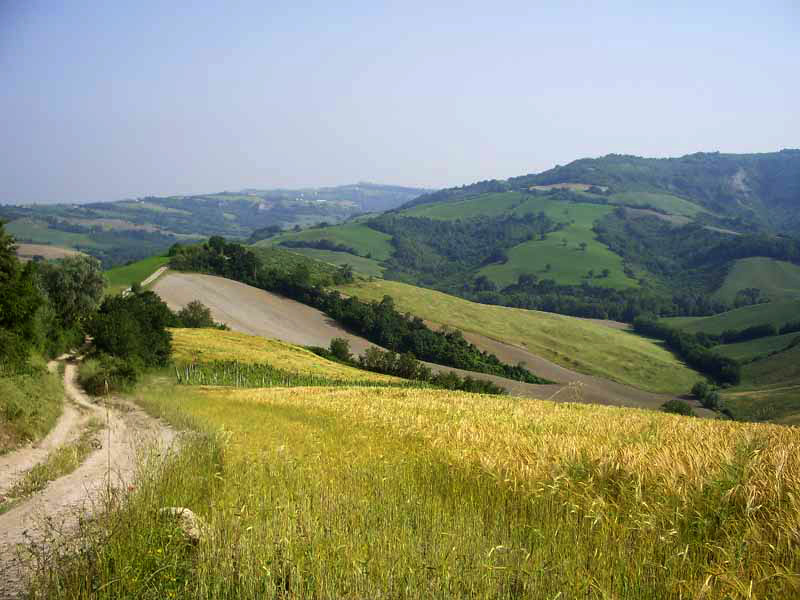Protected Area
Identity Card
- Land Surface Area: 273.00 ha
- Lower altitude (m): 185
- Higher altitude (m): 550
- Regions: Emilia-Romagna
- Provinces: Rimini
- Municipalities: Gemmano
- Establishment Measures: DCR 421 23/04/1991 - DCR 631 03/10/1991 - DCR 531 16/12/2003 (ampliamento)
- PA Official List: EUAP0261
- Park Authority: Ente di gestione per i Parchi e la Biodiversità - Romagna
The Reserve
The Onferno Oriented Nature Reserve, situated in the hinterland of the Province of Rimini, was established in 1991 and it covers a 2734-ha-large surface in the municipality of Gemmano.
The heart of the reserve is the formation of selenic gypsum, where the millenary flowing of underground waters led to the formation of the Onferno Caves. The main cave, which is 700 m long and 70 m deep, keeps the most significant colony of bats in the whole region with its more than 8,000 bats belonging to seven species, such as the common bent-wing bat (Miniopterus schreibersii), the mostly present species also considered as endangered in its territory.
From the vault of the Quarina room regular conical protuberances stick out, and they are among the most wonderful and big in Europe.
On the emerging gypsum outcrop it rises the ancient village of Onferno, that in the past was called "inferno" (meaning "Hell") because of the presence of the caves that people considered as the entrance to that dark place. In 1800 the Bishop of Rimini changed the village's name into the current one. The protected area also includes the steep sandstone walls of the Ripa di Morte, the near badlands, the forest strips and the cultivated areas typical in this southern side of Romagna between San Marino and Montefeltro.
Geomorphology
Among clay, sandstone and gypsum
The sequence of layers we can observe along the Ripa della Morte - where they range from the clay of the badlands to the steep sandstone walls - originated from the sedimentation of clayey and sandy materials in shallow sea environments during the middle and late Pliocene (3 to 1.5 million years ago). The small and isolated gypsum outcrop of Onferno is a testimony to the complex translation movements that during the last events of the apennine orogeny brought a wide blanket of different materials (the so-called "Marecchia valley's blanket") in the areas of Romagna situated between the Conca and the Marecchia valleys. In the clay it is possible to observe many strips of different kind, such as the selenium section of Onferno: among the widest ones there are Sasso Feltrio and the calcareous cliff of S. Marino.
Further information (Italian text)
The Flora
In the surroundings of the gypsum outcrops
The most interesting vegetation of the reserve is that connected with the gypsum outcrops and with the areas that are affected by the underground karst system.
Further information (Italian text)
The Fauna
The crested porcupine and other mammals
The Onferno area is characterized by the typical fauna of the hills between Romagna and Montefeltro. Among the small mammals it is remarkable the presence of the Apennine shrew, a species which was initially considered as exclusive of the mountain areas. In the meadows and in the cultivated fields the European mole and the European water vole are very common, while in the forest there are mainly the wood mouse and the bank vole. Among the shrubs the hedgehogs and the hazel dormouse built their nests.
Further information (Italian text)








